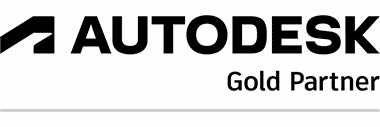
The CannonDesign team collaborates using VR and other visualization tools. Courtesy of CannonDesign.
In 2017, CannonDesign broke ground by hiring Hilda Espinal as its first chief technology officer—a surprisingly uncommon position for large architecture and engineering firms.
With her background in architecture, information technology, and project management, Espinal helps the firm use technology to develop better design and stronger partnerships. This approach, she believes, leads to higher productivity, competitiveness, and profits for everyone involved in a project, from the designers to the builders to the building occupants. Firms might once have kept information close in the name of differentiation, but Espinal is seeing more of a collaborative spirit in the industry: an open-sharing environment that helps everyone start the race from farther down the track.
Though Building Information Modeling (BIM) is at the core of this shift, Espinal says a culture of sharing has spurred other practices, such as bringing subject-matter experts in-house for planning and design. Here, Espinal offers five lessons that illustrate ways digitalization is transforming the culture of collaboration for architects, engineers, contractors, and occupants and owners.

CannonDesign’s in-house medical experts collaborated with the firm’s designers on the Kaiser Permanente Radiation Oncology Center project in Anaheim, CA. Courtesy of CannonDesign.
1. Sharing Information Facilitates Progress
Project delivery is not a linear process, but it’s often presented that way, Espinal says. In reality, many aspects of it are often cyclical, and therefore, the opportunities to share information are rich. “I’m a licensed architect, and while our expertise is crucial to a project, it is limited,” she explains. “Imagine how much better it would be if we had the additional insight of a contractor—early on—to help further educate us on constructability realities and help each other avoid design-to-build pitfalls. Because when we operate in silos, we are simply not equipped to foresee.”
When computer modeling first became part of design, it required such a massive investment of technology, time, education, and content building that firms were reluctant to share information, Espinal says. Now, the technology has evolved to a point where nearly everybody in developed economies can access it. Espinal hopes that best practices for using modeling and visualization software will be established for each industry sector; adopting a common approach could get people at all stages of a project on the same page much quicker.
“Information is power—when it’s shared, not when it’s kept to yourself,” she says. “That’s when we start to evolve and improve upon each other’s knowledge. Being able to free resources up, it’s ultimately going to benefit the actual product, whether it’s a building or a city.”
3. Collaboration Must Begin Within
In the next five years, Espinal says she’d like to see more digital collaboration happening within design, engineering, and construction firms, which will lead to better information sharing with other collaborators. On a strategic level, firms can start by having conversations about what they’re comfortable sharing and what they aren’t, so it’s all very intentional.

“Knowledge sharing and knowledge capture really need to grow at the micro level and within our own firms, where we should make a more concerted effort toward digitizing our knowledge,” she says. “You need to not just have it all in your head; you need to record it somewhere and make it accessible and shareable. That’s the very first step.”
Because CannonDesign’s portfolio includes major health-care projects—such as UC San Diego Health’s Jacobs Medical Center and the Kaiser Permanente Radiation Oncology Center in Anaheim, CA—the firm has taken the uncommon step of hiring staff medical professionals that are integrated in project design from the get-go. Its practice, therefore, includes early advisory services all the way through post-occupancy engagement and facility-optimization solutions.
4. Visualization Software Is Here to Stay
There are many ways to approach client collaboration. When CannonDesign created the new student center for Toronto’s York University, for example, it engaged 11,000 students in every aspect of the process, working to ensure that inclusivity and wellness were at the forefront of the design. Designers are trained in a vocabulary of drawings. They can present building sections and elevations and convey what they represent to project stakeholders. But immersive visualization platforms—virtual reality, augmented reality, and the like—improve dialogue with clients and project partners, Espinal says.
“With the advent of technologies like virtual reality and augmented reality, we can say, ‘Here, please try on these goggles,’ and you can walk in this space and ask, ‘Does that ceiling feel too low? Does the width of this hallway feel right?’” she explains. “Now, clients can really experience design. It gives them a much louder voice to say, ‘Hey, this works; this doesn’t’—they become a further part of the design process.”

York University’s new student center in Toronto. Courtesy of CannonDesign.
5. Information Sharing Is an Ecological Responsibility
Climate change puts increasing pressure on designers to create sustainable, resilient spaces—reusing materials, reducing waste, and orienting buildings to maximize daylight or other conditions. Because climate change poses threats to the built environment, it may not be ecologically responsible for individual firms to spend time and resources developing their own sustainability solutions when the greater community could benefit from those ideas.
“If you’re committed to being sustainably sensitive, you start to think about glazing versus opaque surfaces or about the orientation of a building, modeling it and testing options,” Espinal says. “After a few times of trying it, it becomes part of the intel.” She says designers have a responsibility to share this insight: “Ultimately, being responsible to the environment is just something we need to do and certainly not an area to be competing about. We have one earth to share and need not keep knowledge gained and best practices to ourselves.”



